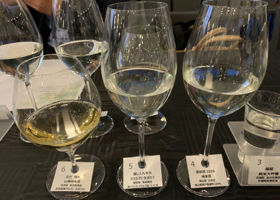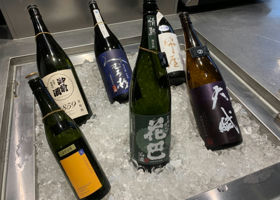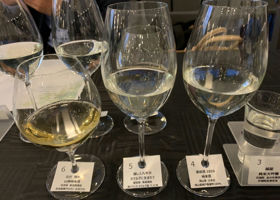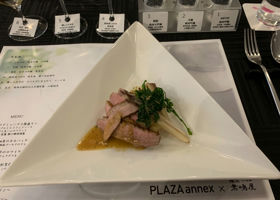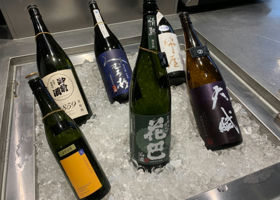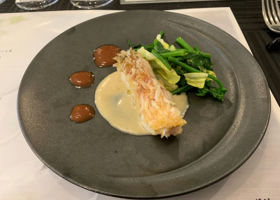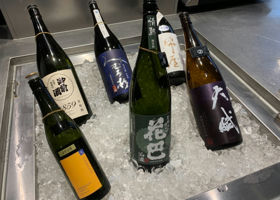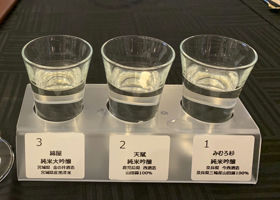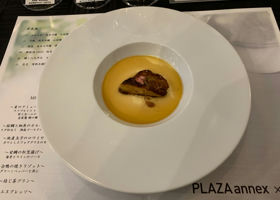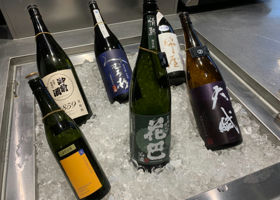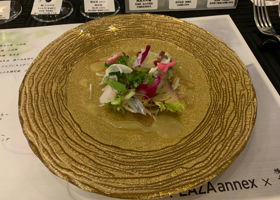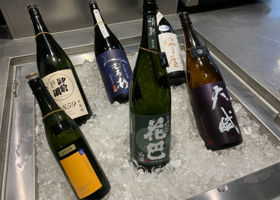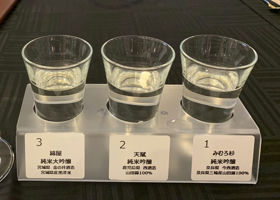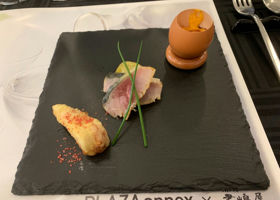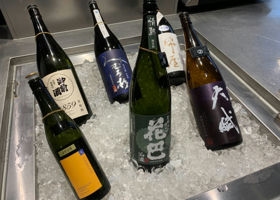Timeline
酒呑みKen1At Isuzu PLAZA annex × Kimijimaya's Sake Seminar
It has a refreshing aroma of Yoshino cedar and a spicy aroma characteristic of aged sake.
It has a sweet flavor with a good balance of bitterness and astringency, and the nose has a smoky aroma.
I had it cold this time, but I think it is absolutely delicious lukewarm or warmed up.
Serve with a sweet treat such as yokan jelly or chocolate, or with a well-seasoned Chinese meal.
I paired it with hojicha pudding and espresso for dessert. 酒呑みKen1At Isuzu PLAZA annex × Kimijimaya's Sake Seminar
This sake is brewed using a French native rice called Manoubi rice from Camargue in Provence in southern France.
Because of this, the sake is called Junmai Daiginjo, but it is classified as Sake.
It has a clear, pale yellow color with a hint of citrusy ginjo aroma.
The mouthfeel is sweet and delicious with a beautiful acidity and a hint of salty minerality.
It is well-balanced and the aftertaste lasts for a while.
If you were told it was a white wine with this taste, you would be convinced without realizing it was sake!
We paired it with grilled duck risotto with green pepper. 酒呑みKen1At Isuzu PLAZA annex × Kimijimaya's Sake Seminar
Soft aroma of rice.
Slightly dry with a rich and thick flavor.
The first mouthfeel is gentle, but in the middle part of the taste, umami, astringency and acidity are all in one.
The complex but well-balanced strength of this wine is a perfect match for main dishes with rich sauces.
Paired with: Deep-fried sea bream with shrimp and wine sauce 酒呑みKen1At Isuzu PLAZA annex × Kimijimaya's Sake Seminar
This sake is made from Yamadanishiki grown organically without pesticides and chemical fertilizers by Mr. Kurosawa, a contract farmer.
The aroma is modest, clean and sweet.
The mouthfeel is gentle, with a good balance of umami and acidity, and a beautiful mouthfeel.
Because it is light and you will not get tired of drinking it, you can finish it easily and even have a second glass.
The dish we paired it with was Royale of local eggs with poached foie gras on top. 酒呑みKen1At Isuzu PLAZA annex × Kimijimaya's Sake Seminar
I used to drink potato shochu, Tominohozan, but this was my first time to try sake, Tenpui.
The aroma is fruity and sweet, but it has a clear ginjo flavor.
The flavor is strong and firm, but not heavy. The slight acidity and bitterness tighten the aftertaste, so you don't get tired of drinking it.
Paired with: Carpaccio of sea bream and fine fish, salad with Shonan Gold dressing 酒呑みKen1At Isuzu PLAZA annex × Kimijimaya's Sake Seminar
It has a clear ginjo aroma and no habits, so it is easy to drink.
The flavor with a hint of sweetness spreads out, and the aftertaste lingers for a long time.
From the beginning to the end of the course, you can keep drinking it forever.
Three kinds of amuse-bouches are served with this wine.
Oeuf Brouille with Truffle Sauce, Fritto of Bamboo Shoots and Cured Ham, Homemade Smoked Mackerel RecommendedContentsSectionView.title

